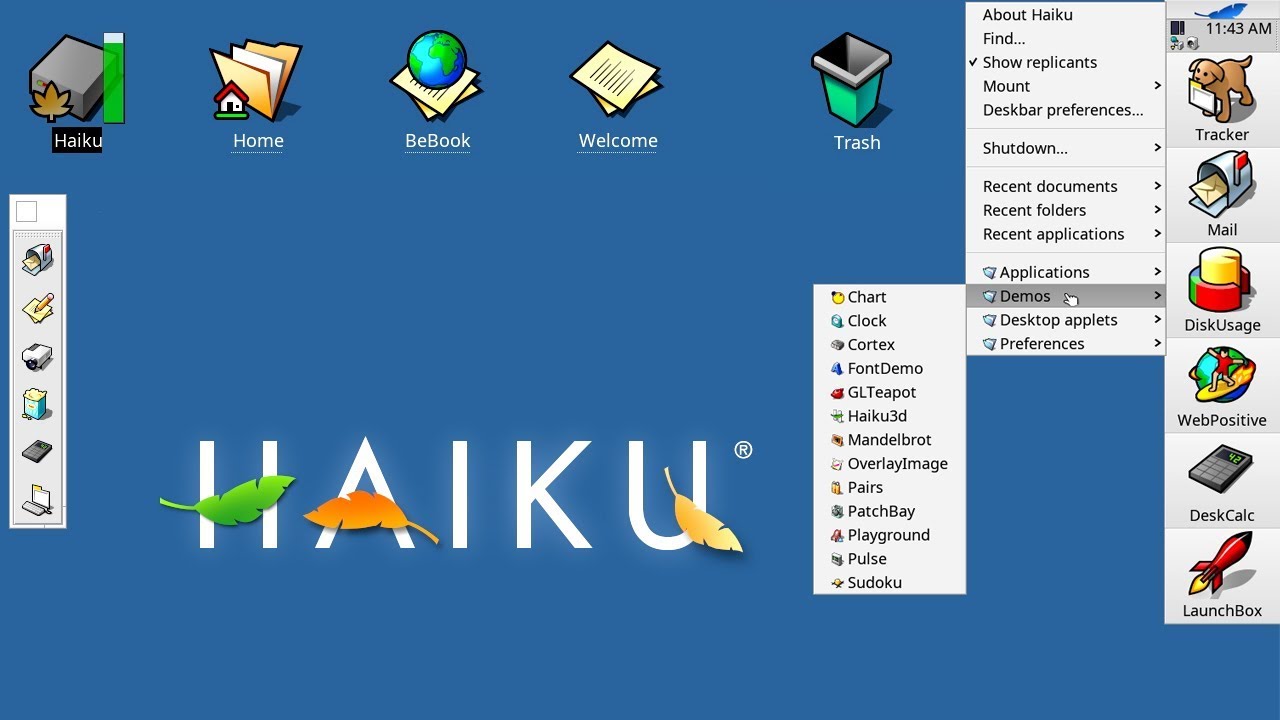Every year, millions of Apple devices are lost, forgotten, or deliberately abandoned, creating a hidden ecosystem of technology limbo that few people ever talk about.
🔍 The Magnitude of Apple’s Lost Device Problem
The phenomenon of abandoned Apple devices represents a staggering reality in our modern digital age. From iPhones left in taxi cabs to MacBooks forgotten in coffee shops, the volume of lost Apple products creates an intricate network of recovery systems, resale markets, and ethical dilemmas that stretch across the globe.
According to industry estimates, approximately 70 million smartphones are lost annually in the United States alone, with Apple devices representing a significant portion of this number. The value of these abandoned devices exceeds billions of dollars, creating a complex ecosystem involving lost and found departments, police evidence rooms, refurbishment centers, and secondary markets.
What makes Apple devices particularly interesting in this context is their built-in security features. Activation Lock, Find My iPhone, and other protective measures have transformed how lost devices are handled, creating both obstacles for thieves and challenges for legitimate recovery efforts.
📱 Where Do Lost Apple Devices Actually Go?
The journey of an abandoned Apple device follows several distinct pathways, each with its own set of characters, procedures, and outcomes. Understanding these routes reveals a fascinating underworld of technology recovery and redistribution.
Transportation Hubs and Lost Property Offices
Airports, train stations, and taxi companies maintain dedicated lost and found departments that process thousands of Apple devices annually. London’s Transport for Lost Property Office, for instance, handles over 300,000 items yearly, with smartphones and tablets among the most commonly surrendered items.
These facilities typically hold items for 90 days to several months, depending on local regulations. Unclaimed devices face different fates: some are auctioned publicly, others donated to charities, and some are recycled through official channels. Major international airports like Heathrow and JFK have developed sophisticated tracking systems specifically for managing the volume of lost electronics.
Police Evidence Rooms
Law enforcement agencies worldwide maintain evidence rooms filled with recovered Apple devices. These gadgets arrive through various channels: found property reports, theft recoveries, and criminal investigations. The typical retention period ranges from months to years, depending on whether the device is connected to an ongoing case.
Police departments face unique challenges with Apple’s security features. Activation-locked devices become essentially useless for resale, leading many departments to establish partnerships with Apple for proper data wiping and recycling. Some jurisdictions have begun auctioning unclaimed devices through government surplus websites, though locked devices typically fetch minimal prices.
🔐 The Activation Lock Conundrum
Apple’s Activation Lock has fundamentally changed the economics of device theft and recovery. Introduced with iOS 7 in 2013, this feature ties devices to their owners’ Apple IDs, rendering them nearly useless without proper credentials.
This security measure has created an interesting paradox: while it has significantly reduced iPhone theft rates in major cities—some reporting drops of up to 40%—it has also resulted in warehouses full of locked, unrecoverable devices. Recyclers, refurbishers, and second-hand dealers must now verify activation status before acquiring devices, fundamentally altering the secondary market.
The unintended consequence? Thousands of perfectly functional devices sitting in limbo, unable to be restored to use because their original owners cannot be located or have forgotten their credentials. This represents both an environmental concern and a waste of valuable resources.
💼 The Secondary Market for Found Apple Devices
A complex secondary market has emerged around abandoned Apple products. This ecosystem includes legitimate refurbishment companies, online marketplaces, and unfortunately, less scrupulous operators seeking to circumvent security measures.
Legitimate Refurbishment Channels
Certified refurbishers work with institutions, corporations, and government agencies to process devices acquired through proper channels. Companies like Gazelle, Decluttr, and Apple’s own Trade-In program create pathways for devices to re-enter the market legally.
These operations depend on obtaining devices with clear provenance—proof they weren’t stolen and that activation locks have been properly removed. The refurbishment process includes data wiping, hardware testing, cosmetic restoration, and certification before resale. This industry represents a multi-billion-dollar market, driven partly by environmental concerns and partly by consumer demand for more affordable Apple products.
The Gray Market Problem
Unfortunately, not all channels are legitimate. A gray market exists where unscrupulous dealers acquire locked or questionably sourced devices, attempting various workarounds or selling them for parts. This market operates through online classified ads, informal networks, and sometimes international shipping to countries with less stringent electronics regulations.
Apple has continuously worked to close loopholes and combat these operations, but the cat-and-mouse game continues. Some operators specialize in harvesting components from locked devices—screens, cameras, batteries—for the repair market, while others target international buyers unaware of activation lock limitations.
🌍 The Global Journey of Abandoned Devices
Abandoned Apple devices often embark on international journeys, ending up thousands of miles from where they were lost. This global redistribution follows economic incentives and regulatory differences across countries.
Developing markets in Africa, Southeast Asia, and South America have become destinations for devices that cannot be easily resold in their countries of origin. Even locked or damaged Apple products have value in these markets: for parts, for repair practice, or for users with technical knowledge to address certain limitations.
This international flow raises important questions about e-waste, data security, and the digital divide. While some view this redistribution as extending device lifespans and providing affordable technology access, others worry about improper data disposal and environmental impacts when devices eventually reach end-of-life in regions with inadequate recycling infrastructure.
🔧 Technology and Services for Tracking Lost Devices
Apple’s Find My network represents one of the most sophisticated lost device tracking systems ever deployed. Utilizing Bluetooth signals from hundreds of millions of Apple devices worldwide, the system can locate lost items even when they’re offline.
The Find My app integrates iPhone, iPad, Mac, Apple Watch, and AirTag tracking into a unified interface. This technology has enabled countless recovery stories, from iPhones found across continents to MacBooks recovered from burglars months after theft.
Beyond Apple’s official tools, third-party tracking apps and services have emerged to supplement device security. These range from simple location logging applications to sophisticated solutions that capture photos of unauthorized users, track SIM card changes, and provide remote data management capabilities.
📊 The Economics Behind Lost Apple Products
The financial implications of lost and abandoned Apple devices extend far beyond individual loss. Insurance companies, corporations, educational institutions, and even governments must account for device loss in their budgets and policies.
Enterprise device management has become increasingly sophisticated partly in response to loss concerns. Companies deploy Mobile Device Management (MDM) solutions that enable remote tracking, data wiping, and usage monitoring. These systems represent significant investments but pale in comparison to the costs of data breaches or competitive intelligence loss.
Insurance products specifically targeting smartphone and tablet loss have created another revenue stream in this ecosystem. Providers like AppleCare+ with Theft and Loss coverage charge premiums based on sophisticated actuarial models that account for device value, loss probability, and recovery rates.
♻️ Environmental Impact of Abandoned Devices
The environmental dimension of abandoned Apple devices deserves serious consideration. Each device contains valuable materials—gold, silver, rare earth elements—alongside potentially harmful substances that require proper disposal.
When devices enter legitimate recycling channels through Apple’s Trade-In program or certified e-waste recyclers, materials can be recovered efficiently. Apple has invested heavily in recycling robotics, including their Daisy robot that can disassemble 200 iPhones per hour, recovering materials for new product manufacturing.
However, abandoned devices that enter informal recycling streams in developing countries often undergo rudimentary processing that releases toxins and fails to capture valuable materials. This represents both environmental harm and resource waste, as the concentrated materials in electronics far exceed typical ore concentrations found in mining.
🎭 Human Stories Behind Lost Devices
Behind every abandoned device lies a human story—some mundane, others extraordinary. Social media regularly features reunion stories that capture public imagination: the iPhone recovered from a lake after months, still functional; the iPad containing a deployed soldier’s family photos, returned through persistent detective work; the MacBook with a student’s thesis, recovered days before submission deadline.
These narratives highlight the emotional value devices hold beyond their monetary worth. Modern smartphones contain digital lives—photos, messages, notes—that cannot be replaced. This reality has motivated Apple’s continued investment in security and recovery features, recognizing that customer loyalty often depends on protecting these digital memories.
Loss also affects different demographics unequally. For someone living paycheck to paycheck, losing an uninsured iPhone represents a catastrophic expense. For businesses, lost devices can mean compromised client data and regulatory penalties. For elderly users, lost devices might mean losing contact methods with family and emergency services.
🛡️ Prevention: Keeping Your Apple Device Safe
Prevention remains more effective than recovery. Apple has implemented numerous features to help users avoid loss and facilitate recovery when it occurs. Understanding and properly configuring these tools dramatically improves outcomes.
Essential prevention measures include enabling Find My before loss occurs, using strong passcodes and biometric authentication, maintaining current backups through iCloud or local storage, and adding contact information to lock screens. Many users neglect these simple steps until after experiencing loss.
Physical prevention matters too: quality cases with attachment points, habit formation around device placement, and awareness in high-risk environments like public transportation and crowded venues. Some users employ Bluetooth trackers attached to devices or cases, adding another recovery layer.
🔮 The Future of Lost Device Management
Emerging technologies promise to further transform how lost devices are managed. Ultra-wideband technology in newer iPhones enables precise location tracking within centimeters. Future iterations of Find My may incorporate augmented reality guides to visually direct users to lost items.
Artificial intelligence and machine learning are being applied to predict loss scenarios and proactively alert users. Imagine your iPhone notifying you that you’ve left your usual coffee shop without it, or your Apple Watch alerting you when your MacBook is being moved from its typical location unexpectedly.
Blockchain technology has been proposed for creating immutable ownership records, potentially streamlining legitimate transfers while making stolen device laundering more difficult. While implementation challenges remain, the concept addresses current gray areas in device provenance verification.
🏛️ Legal and Ethical Considerations
The legal landscape surrounding found devices varies significantly across jurisdictions. Some regions require found property be surrendered to authorities, while others permit finders to claim ownership after specified periods. These variations create confusion and inconsistent outcomes.
Ethical questions also arise: Is it acceptable to keep a found device if reasonable efforts to locate the owner fail? Should activation-locked devices be unlocked for reuse to prevent e-waste? How should the balance between owner privacy and legitimate law enforcement needs be struck?
These questions lack universal answers, instead reflecting broader societal debates about property rights, privacy, sustainability, and technology governance. As devices become more integral to daily life, these discussions will likely intensify.
💡 What Happens When You Report a Lost Device
Understanding the recovery process helps set realistic expectations. When you mark a device as lost through Find My, it enters Lost Mode, displaying contact information and becoming unusable for unauthorized access. The device’s location updates whenever it connects to networks.
Simultaneously, users should file police reports with serial numbers, contact their wireless carriers to suspend service, and inform relevant institutions if the device contained sensitive data. Insurance claims require prompt filing with documentation.
Recovery rates vary significantly. Devices lost in semi-controlled environments like offices or schools have higher recovery rates than those lost in public spaces. Prompt action within the first 24 hours substantially improves outcomes, as devices reported quickly are less likely to disappear into secondary markets.
🌟 Success Stories and Remarkable Recoveries
The annals of Apple device recovery contain remarkable tales that demonstrate both technological capability and human determination. In 2023, a diver recovered an iPhone from a lake where it had rested for three months—still functional after drying. Find My enabled its return to the grateful owner.
International recoveries occur regularly through the Find My network. An iPad lost in New York appeared online in Eastern Europe, leading to recovery through international police cooperation. A stolen MacBook was tracked to a refurbishment facility, resulting in criminal charges and device return.
These stories, while exceptional, illustrate how integrated security features and global connectivity have transformed device recovery from nearly impossible to genuinely feasible, even across vast distances and time periods.
The untold story of abandoned Apple devices reveals a complex intersection of technology, economics, human behavior, and environmental responsibility. As our dependence on these devices deepens, understanding their journey through loss, abandonment, and potential recovery becomes increasingly important for users, institutions, and society broadly. Whether through technological innovation, improved practices, or evolving social norms, the future promises continued evolution in how we manage this silent epidemic of lost technology.
Toni Santos is a visual historian and creative artisan whose work channels the bold spirit of the steam-powered era—a time when imagination, mechanics, and ambition converged to reshape the modern world. Through richly detailed visual narratives and handcrafted design, Toni celebrates the legacy of steam innovation as both an artistic and technological revolution.
Driven by a passion for mechanical aesthetics, forgotten inventions, and industrial-age ingenuity, Toni reimagines the world of steam through illustrations, tactile artifacts, and storytelling that capture the poetry of pressure, motion, and invention. From piston-driven engines to brass-detailed diagrams, each piece reveals how steam wasn’t just power—it was promise.
With a background in visual design and historical research, Toni brings a craftsman’s eye and a dreamer’s heart to the stories of tinkerers, inventors, and visionaries who shaped the 19th century. His work doesn’t merely document machines—it honors the culture, courage, and creativity that drove a world to reimagine itself through gears, valves, and vapor.
As the creative voice behind Vizovex, Toni shares curated articles, reconstructed blueprints, and visual interpretations that bring this industrial past to life. His collections serve as a tribute to:
The elegance of steam-era design and innovation
The human stories behind great mechanical feats
The aesthetic beauty found in function and form
The echo of invention in today’s creative world
Whether you’re a history lover, a fan of steampunk, or an admirer of antique technology, Toni welcomes you into a world where art and machinery fuse, one cog, one drawing, one rediscovered marvel at a time.





